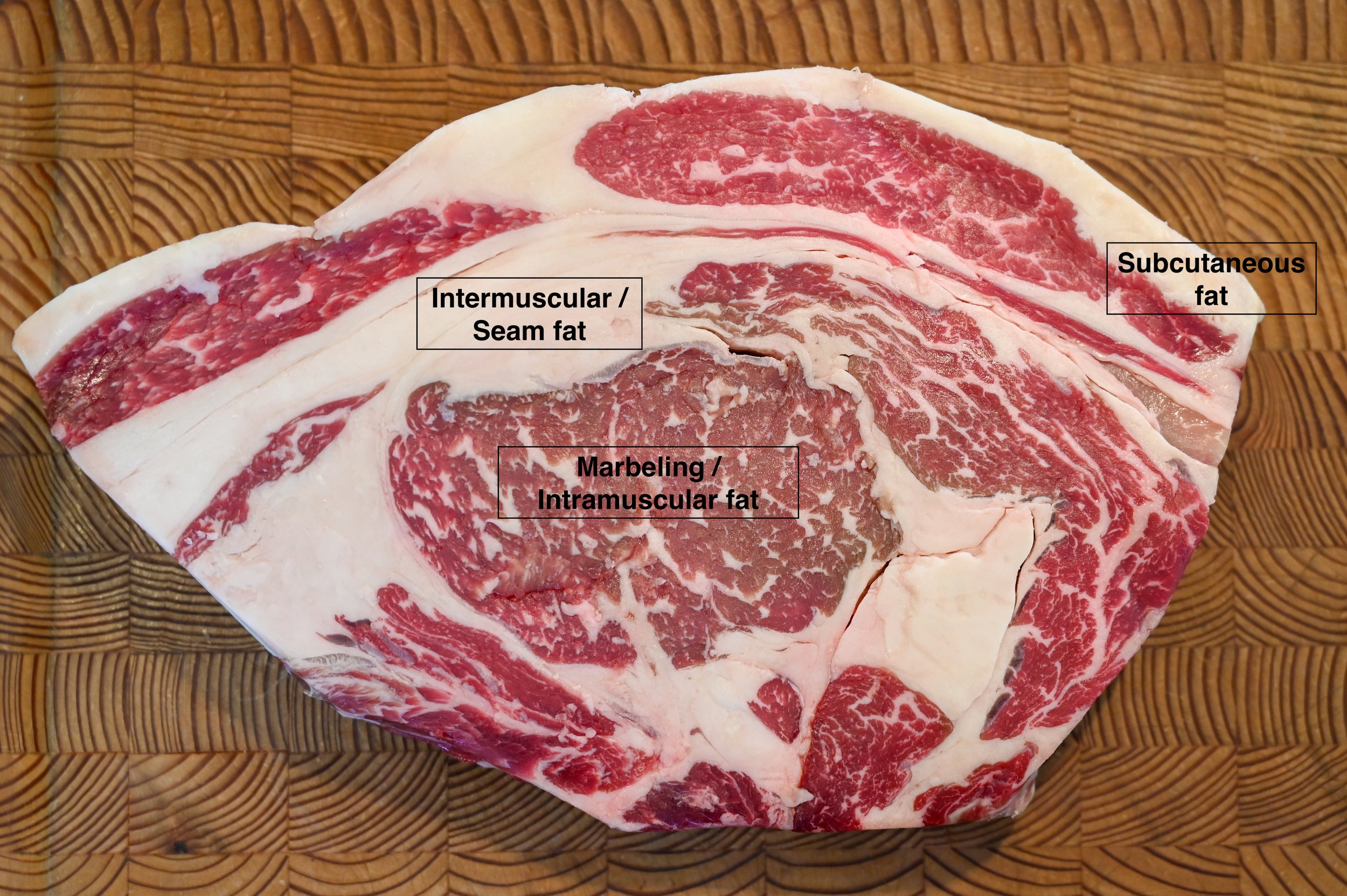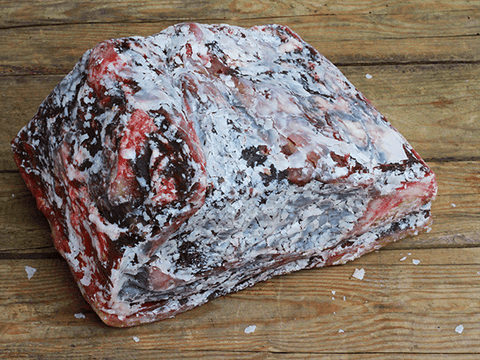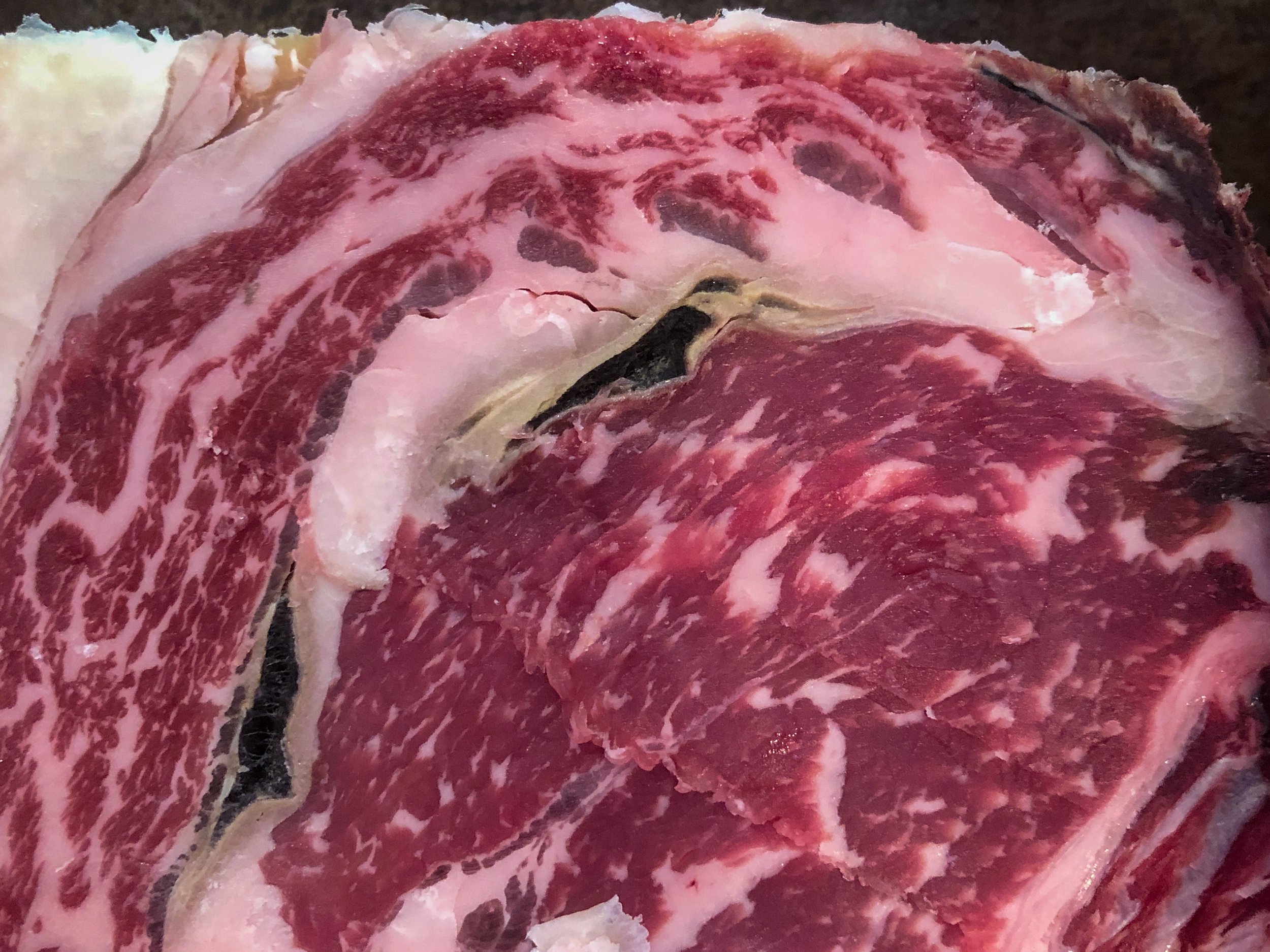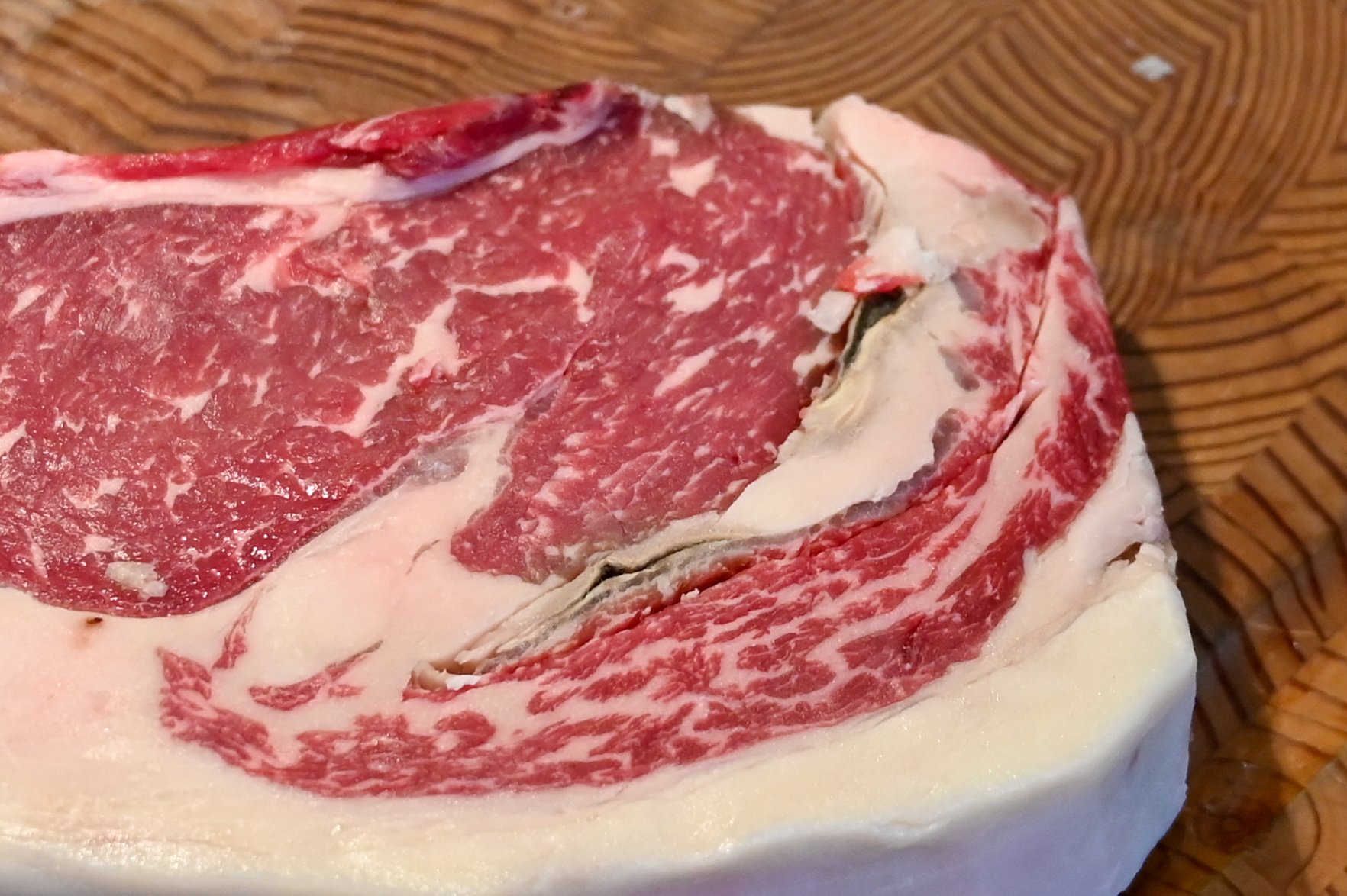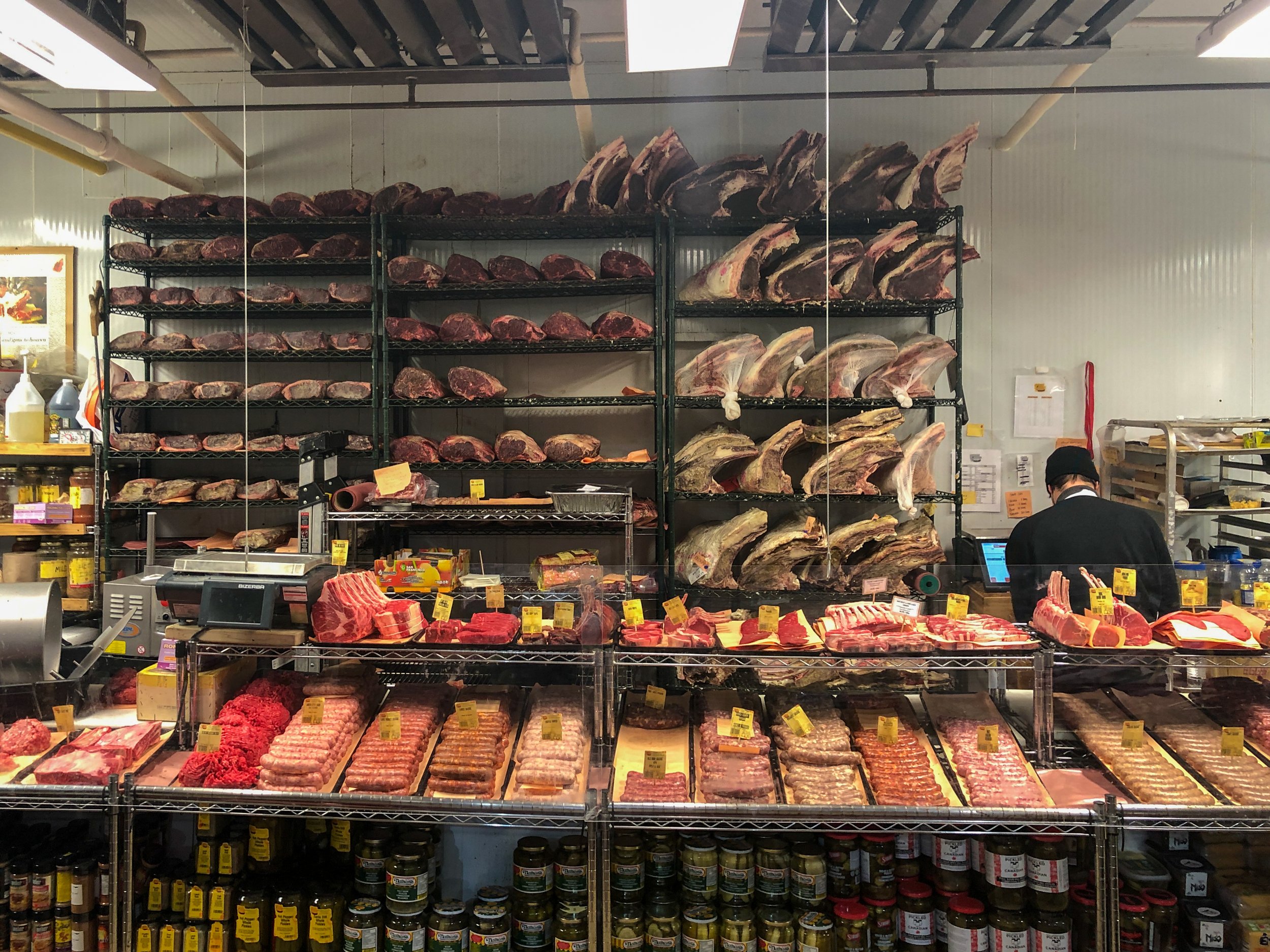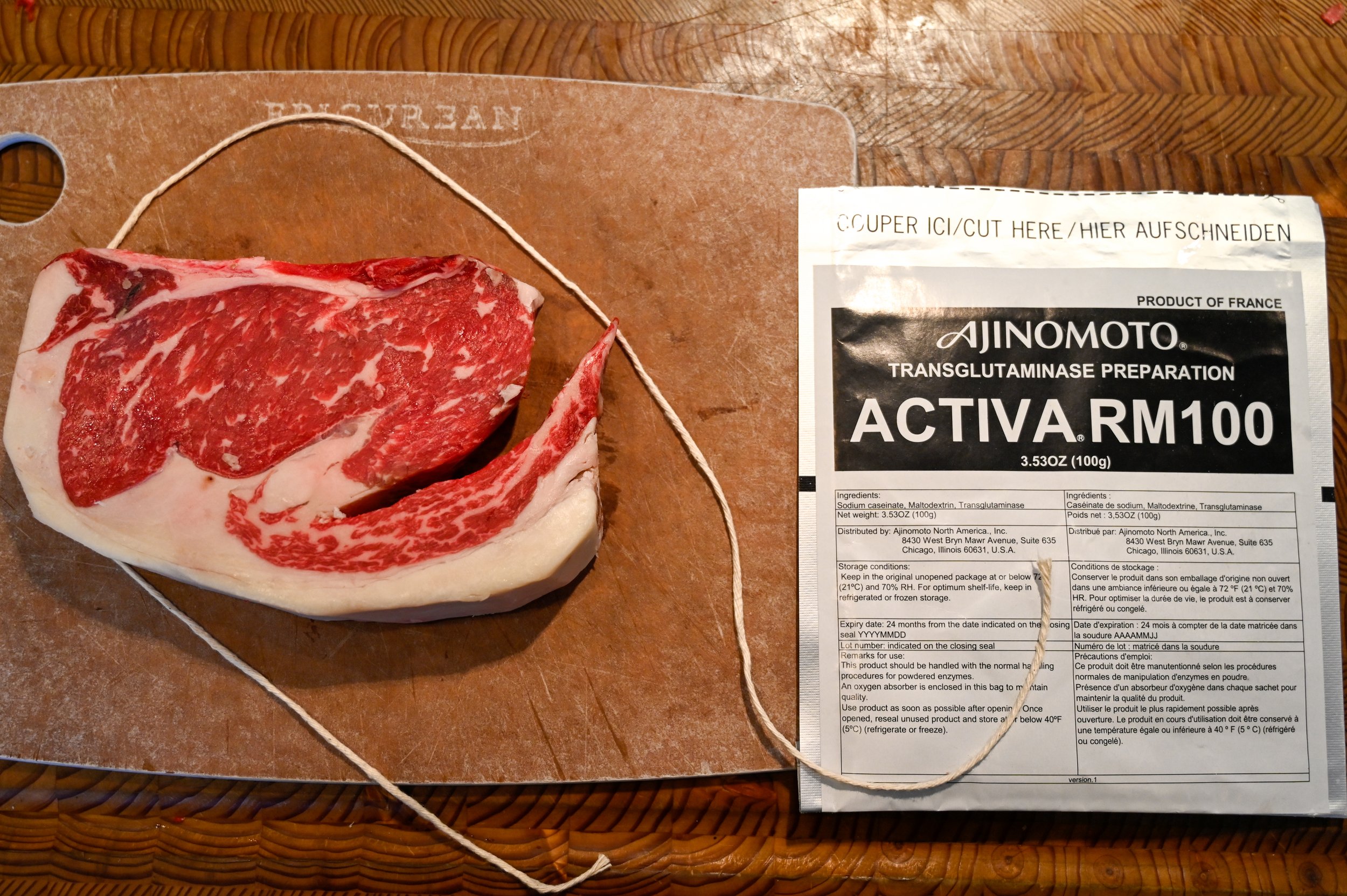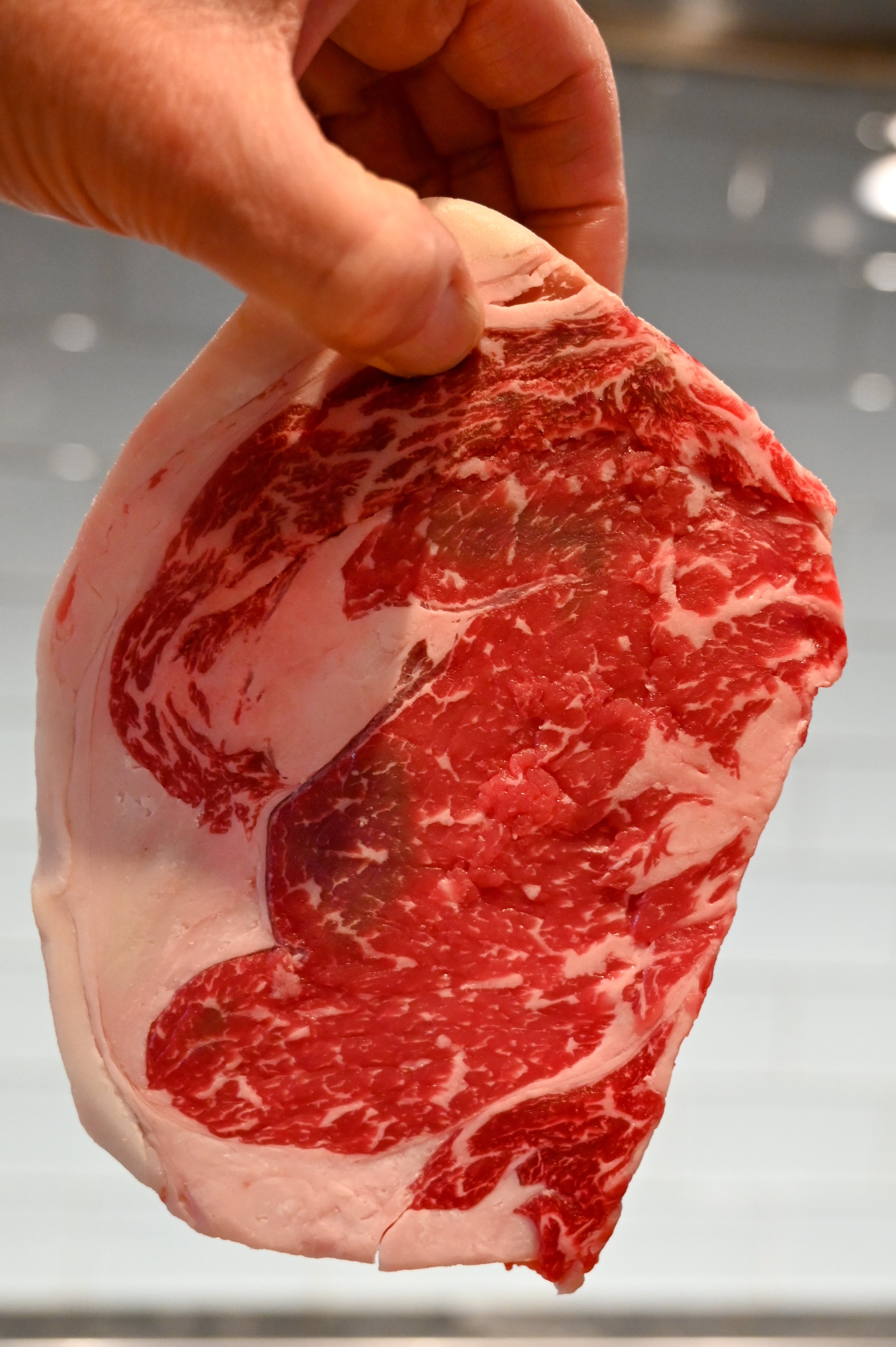Transglute Steak
You may have seen an earlier post regarding my first attempt at dry ageing (DA) a bone in ribeye subprimal. What I didn’t mention was that when the meat was pulled from the DA fridge at day 50, I discovered some mould which had tracked from both ends along a fat seam.
Seam fat or “intermuscular fat” is the fat found in between and separating muscles groups. It runs along the length of the subprimal and provides an entry point at either end of the subprimal for unwanted moulds. Once the mould takes foot in the seam, it can track and grow deeper into the meat.
The seam fat or “intermuscular fat” is found in between and separating muscles. groups along which mould can track. (The small streaks of fat found within the muscle, i.e. intramuscular fat, and giving it the appearance of marble, is known as marbling and contributes to juiciness and flavour. The subcutaneous fat also known as back fat or external fat, is located on the outside of the muscle, just under the skin.)
This wasn’t the “good” mould one sometime sees on DA beef i.e. species of Thamnidium, Rhizopus and Mucor, which according to some contribute to the characteristic DA meat flavour. Those moulds grows on the surface of the subprimal and are typically whitish in colour. This was a dark mould and it didn’t look edible!
The white is “good” mould growing on the surface. While one can debate if this adds to the flavour profile of DA beef, everyone agrees that black mould is bad and shouldn’t be eaten!
Black mould has entered and grown along the seam fat of the first steak cut from the end of my subprimal. If you look closely, you can see the actual mycelia, i.e. the thread like growth. The meat otherwise looks perfectly good.
Consulting members of the Official Steak Agers Owner FaceBook group, they suggested trimming the ends until I reached "clean" meat. This would of course resulted in loss of otherwise good looking steaks.
As one keeps cutting steaks from the end, there is less mould present. The next steak cut after this one was mold free, but I didn’t want to waste those “mouldy” end steaks.
Fortuitously, that same day I was shopping at the Cheese Boutique , a Toronto boutique grocer of some fame (The owner Afrim Pristine is purveyor of fine cheeses to many a fine restaurant and TV personality) where they have an ageing room for not just cheese, but also meat.
The Cheese Boutique’s meat locker.
The head butcher was very helpful when I told him about my mouldy DA steaks. He told me this is commonly encountered especially for long ages, those over 21-28 days. That is why he said some will cover the ends in beef tallow to keep mould from entering the seems.
This subprimal had been DA in the Cheese Boutique’s cold room for nearly one year! Notice the tallow (blue oval) that was applied to prevent unwanted mould from entering and growing along the seam fat.
However even still, they will on occasion encounter this for no apparent reason. If they do, they simply cut the seam out and use some butchers twine to hold the piece together. This allows them to salvage the end steaks which otherwise might have to be thrown out increasing yield and therefore profit
Butcher showing me how to tie off a steak if seam fat has to be removed because of black mould.
On returning home, I grabbed the two mouldy end pieces which I still had from the fridge, and rather than just throwing them out, I took the butcher’s advice and cut out the seam.
The mouldy seam has been cut out leaving behind good clean meat.
However, instead of just using butchers twine to re-approximate the two edges from where the seam was removed, I thought why not "glue" the seam back together with transglutaminase. Transglutaminase, aka “meat glue” and sold under the trade name Activa® (not to be confused with Activ1a yogurt!), was developed in the 1990s by the Japanese company Ajinomoto to improve surimi, e.g. "crab legs", made from pollock paste.
Interestingly they were also the first to market MSG which they identified as the major component in umami which many consider the fifth core taste along with sweet, sour, bitter, and salty. (The company name Ajinomoto derives from “Aji No Moto” which in Japanese means “source of taste”.)
Transglutaminase works by binding proteins in food through chemical cross-links between the amino acids glutamine and lysine by forming a strong covalent bond between them. (For more information and applications see earlier posts: “Fish Skin”, “Scallop Prosciutto Sandwich, Butternut Squash & Watercress Purée” and “Meat Glue Redux”.)
Only after I applied transglutaminase, did I tie the steak with butcher’s twine to keep the two edges in close proximity. After allowing a good bond to form (12 hours in fridge), as you can see in the next photo, even with twine removed the seam supports its own weight. Hard to know that it underwent cosmetic surgery!
Seam generously sprinkled with Activa RM100 Transglutaminase
After applying the transglutaminase, the seam was closed, tied off with butchers twine to keep edges approximated, and rested in the fridge to allow the edges to permanently bond.
Success! Mould removed and steak made whole again.
After cooking sous vide, the seem opened up ever so slightly but held even after searing the steak.
For plating, I seared the steak, cut it in half to share with my wife, and served with a delicious compound butter because you can never have too much butter!
